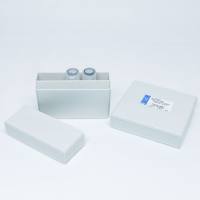Planar Patch Clamp: Advances in Electrophysiology
互联网
760
Ion channels have gained increased interest as therapeutic targets over recent years, since a growing number of human and animal diseases have been attributed to defects in ion channel function. Potassium channels are the largest and most diverse family of ion channels. Pharmaceutical agents such as Glibenclamide, an inhibitor of KATP channel activity which promotes insulin release, have been successfully sold on the market for many years. So far, only a small group of the known ion channels have been addressed as potential drug targets. The functional testing of drugs on these ion channels has always been the bottleneck in the development of these types of pharmaceutical compounds.
New generations of automated patch clamp screening platforms allow a higher throughput for drug testing and widen this bottleneck. Due to their planar chip design not only is a higher throughput achieved, but new applications have also become possible. One of the advantages of planar patch clamp is the possibility of perfusing the intracellular side of the membrane during a patch clamp experiment in the whole-cell configuration. Furthermore, the extracellular membrane remains accessible for compound application during the experiment.
Internal perfusion can be used not only for patch clamp experiments with cell membranes, but also for those with artificial lipid bilayers. In this chapter we describe how internal perfusion can be applied to potassium channels expressed in Jurkat cells, and to Gramicidin channels reconstituted in a lipid bilayer.






